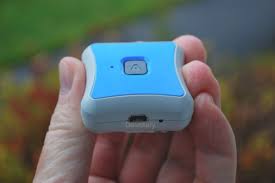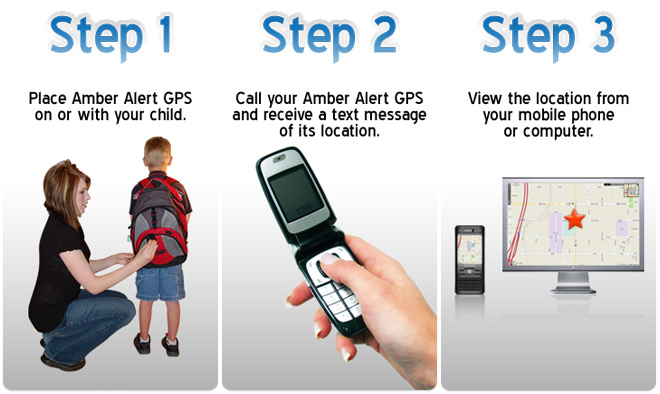GPS in the Classroom
A GPS device in the classroom is a helpful tool to teach students about Geography. The GPS introduces new technology for the students and connects the students globally. Students now can experience the world from a small mobile device in the classroom. Here are some ways a teacher can integrate a GPS device into a Geography class.
-When studying a country students can use GPS devices to find correct latitude and longitude of specific locations. Then students can go online and find pictures of the location being researched. With the information the students have collected, the students can then make a presentation from that information.
-Students can use a GPS device to find their absolute location and relative locations around them. Also by finding the students absolute location, they can compare that with other countries. For example a student can find the distance from where they are at in their school to another school in England.
-Teachers can also have the students GPS the route from their home to school. This is beneficial for special needs students; students with special needs can use the GPS to find their way home in case of an emergency.
-The iPhone GPS app EveryTrail can allow students to go around their school and track where they go. The students can also take pictures of where they went and save them to their trail. Teachers can create a scavenger hunt where students go around the school and find clues by taking pictures. Clues can be a review of Geography terms.
- The reason why the GPS device is beneficial for the classroom is because it introduces new technology for students to use. It helps student’s pinpoint exact locations. Students can be safe; if they ever get lost the knowledge of using a GPS device can help them navigate their way. Students can explore maps and the Geography of countries. Finally it connects other content areas such as math, science and history.
(Example: Students have to use math to find absolute and relative locations. GPS devices in the science classroom helps students view that natural world, they can also use their observation, identification and classification. For history the GPS can be used to look at migrations of people and the development of rural and city areas.)
-A very fun and great way to use a GPS device is Geocaching, which will be explained further in the Wiki. Before moving on to geocaching, watch the video below that contains more information on how to integrate a GPS device in the classroom.
http://www.youtube.com/watch?v=SBx83fDiejU (Video on the many uses of the GPS in the classroom)
What is GPS Geocaching?
GPS stands for Global Positioning System. Geocaching is the outdoor activity of using a gps or other mobile device with a gps system built in to find a series of containers that have been hidden by others participating in the activity. One of these containers is called a “cache”, and they usually contain a log that has the dates and signatures of all of the participators that have found that particular cache. One could call it a treasure hunting game. Participants can put objects in the containers to be taken by those who find it, under the condition that something of equal or greater value is put in its place. The containers themselves are not to be moved from the location they were found in, but the treasures inside can be. The containers, aka the "caches" range in different sizes. They can be any safe object that is capable of being tracked and hidden.



pictures from Google Images
GPS Devices
There is no need to go out and purchase an expensive GPS device in order to participate in geocaching. Any small handheld GPS device will work. The website sells GPS devices that range in cost anywhere from $70 US to $500 US. But second-hand websites, and even some local stores will carry them for cheaper. If wanting to purchase many of them for a classroom, doing some research online will let you purchase in bulk. A handheld GPS device is not all that can be used for geocaching. Any smartphone with GPS capabilities can be used instead. Almost all smartphones are GPS capable. There are geoaching applications for Apple, Android, and even Windows 7 devices for around $10 US. This includes the tablets by these companies. A little investment in the GPS device is mostly all of the money that one has to put down for this hobby. So this small, one time investment is well worth it.


A GPS device An Iphone with the geocaching application
Why it's Cool
Geocaching is an activity that is played all through out the world! There are over a million caches hidden, with more being added everyday. That means that the number of participants can not be too far behind that. Geocaching is a great way to connect people from every corner of the earth. Some serious geocachers travel overseas to find treasures. Most caches have a logbook in them for all of those who have found it to write in. They record what day they found it, and who they are. Some even choose to write a little note by their log to tell people how far they have traveled to find the cache. It is really quite amazing. Just imagine, someone who traveled all the way from Asia was holding the exact same treasures that you are holding right now. It is a good way to feel connected.

An example of a log book. You can see how the elements have effected the book, as well as how many people have logged showing how long it's been hidden. source Google images
How to Start Geocaching

The website is extremely easy to use. All you have to do is logon to www.geocaching.com and up in the right hand corner of the screen there is an area to sign up. The basic program is free, and to go premium, it only cost $30 US for a year subscription or $10 US for 3 months. From there, all of your questions can be answered about how to start geocaching. You can either choose to hide a cache, and then upload its location to the website so that others can start to search for it, or you can just start hunting right away.
Geocaching in 2 minutes:
http://www.geocaching.com/videos/#cat=cat:newbies&vid=-4VFeYZTTYs
This video is off of the website, and it explains what geocaching is, and how to use it.
GPS in Special Education
For people who struggle with cognitive disabilities traveling on their own can be very difficult. For many parents with children with cognitive disabilities one of most terrifying situation that they can imagine is losing their child. Now with GPS tracking device, technology has advanced so parents can monitor where their child at all times.
How can I use this in the special education classroom?
Special education teacher, have a lot going on in the classroom, especially because they have a diverse group of children with a variety of needs. For a students who has cognitive disabilities they can often get confused and disoriented in a big school and get lost especially in a big high school where students are constantly switching classes. With the Amber GPA tracking device, teachers can track their students, and make sure they are getting to class on time. The student can use the Amber device by pressing the emergency/SOS button to get hold of a teacher, if they need assistance going to the bathroom, having a seizure, or if they feel threatened.
Amber Alert GPS

What is it?
The Amber Alert GPS is the smallest and most powerful tracking GPS device known.
How does it work?
The Amber Alert works similar to a smart phone. The GPS uses wireless GSM networks to transfers to a web based gateway to locate the locations. Global Positioning System and also tracks by using cell ID technology to locate the device. The device also comes with a SOS/emergency button, which provides immediate voice communication between the child and the parent, if the child feels that they are in danger.http://www.wired.com/geekdad/2012/08/amber-alert-gps/
Step by Step Process

1. Charge the device and place it on your child.
2. Call your Amber Alert device and you will receive a text message of the location of the device
3. View location of device on computer or mobile phone
https://www.google.com/search?hl=en&newwindow=1&q=Amber%20alert%20GPS&um=1&ie=UTF-8&tbm=isch&source=og&sa=N&tab=wi&ei=Pf08UbbRNMW22gXa2oDIAQ&biw=910&bih=428 sei=QP08UeKxFaW62gXVtIH4DA#imgrc=9EHExRfXh2yhPM%3A%3BeS6Ix7fOYlAldM%3Bhttp%253A%252F%252Fww1.prweb.com%252Fprfiles%252F2009%252F10%252F12%252F3031724%252F0_steps.jpg%3Bhttp%253A%252F%252Fwww.prweb.com%252Freleases%252Fmissingchild%252Famberalertgps%252Fprweb3031724.htm%3B660%3B394
How Advance is this Device?
This piece of equipment offers a variety of level of control. You can simply track just the current location of the device or set change settings to let you know the exact moment a child enters a new location like walking on to a playground or gets into a moving car.http://www.time.com/time/nation/article/0,8599,339581,00.html
The Device Can be Attached to the Child in a Variety of Ways:
·Wristband
· Key chain
·Small Pouch
http://www.youtube.com/watch?v=YaeeQkpt33Y (Video of the Amber Alert GPS)



Comments (0)
You don't have permission to comment on this page.